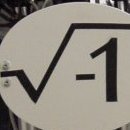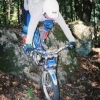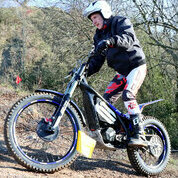-
Posts
427 -
Joined
-
Last visited
Contact Methods
-
Website URL
https://www.ossa-efi.com
Contact Information
-
Worthwhile project! To get some idea of titanium's cost, here is a company that sells titanium fasteners: https://www.probolt-usa.com/titanium/?page=3
-
From a press release on EM's website, "YAMAHA MOTOR Invests in French Company ELECTRIC MOTION SAS" No real details. Read it here: https://em-motorcycles.com/media-file/568/news-release-eng.pdf
-
That's fabulous! Thank you! Only recently did I figure out that 4th gear is really 1.878:1, rather than the 2.112:1 that has been perpetuated in the documentation from the introduction of the Pro model until at least 2023. That actually makes 4th gear useful, as I suppose anyone who owned the bike understood. All these years I have been disrespecting Xiu because no technical person ever proofread the manual. I have an unsubstantiated feeling that the design is being used in EM's FACTOR-e now that GG's patent has expired.
-
Pictures, please! I would love the see the actual gearsets from their "Four / Six system". The patent drawings are not great.
-
Chris, that is a fabulous summary! Thanks for doing the work. I just have one question, what is Konrad's W3? My missus just acquired a Dragonfly -- chosen almost entirely on the basis of weight. There is an immense amount to learn about that bike, and I will be adding to my website in the coming weeks.
-
Trials motors generally run hotter than other competition 2Ts to improve fuel vaporization and throttle response while sacrificing some loss of charge density. 5 to 10 degrees C of hysteresis is fairly typical.
-
Not advisable. Although as a newbie, you might be able to get away with it for a while assuming you don't riding aggressively. Modern rear trials tires use a very low inflation pressure and no rim lock. This is just begging to shear the valve stem off a tube. It's not uncommon for the rear to slowly lose pressure. If you only ride once a week, check the pressure prior to riding. A rear trials tire can be run down to nearly zero pressure, but you risk denting the rim.
-
The nice thing about lemur's suggested gauge is that I expect it would be very tolerant of over-pressure.
-
https://www.electricmotiontech.com/home/em-epure-race/regen-experiments#h.7lz2uhjj7x3c
-
https://www.ossa-efi.com/home/electrics/fuel-injector/fuel-injection-pressure Suggest you download all the factory documentation here: https://www.ossa-efi.com/home/factory-documentation Try searching for the barb by part number.
-
My experience has been that digital pressure gauges that read to 100 psi or so are very inaccurate at trials pressures. Maybe you can find one that claims to be accurate, but I doubt it will be as cost effective as buying another Apico. On the plus side, you probably won't make the same mistake again.
-
I have a little experience with this. As you know, replacing the guides is not typically a DIY job. After installation, the ID needs to be reamed to size and the seats re-cut. The US company Kibblewhite manufactures aftermarket valve guides (and other head components as well). See: https://www.kpmi.us/ The potential problem I see with gas-flowing the ports is that the technique is generally used to improve WOT flow. Unless the person doing the work has experience specifically with trials, the results may actually make the performance worse.
-
Search "jwpf extension cable." AliExpress would seem the most likely source for a single cable. Are you sure the TKO function can be switched in real-time? Maybe EM put the switch where it is because the controller only senses its state at boot-up or when the mode is changed? I don't know. But yeah, it does seem like a horrible place for the switch itself.
-
You are absolutely right, it was the pump test I used to drain the tank. Just ran the injector test on equipment in my lab. That test generates five approximately 100-microsecond pulses, 1 second apart. So yeah, that is not going to squirt any fuel! I think maybe they did it that way so it would not flood the engine? It's more of a test for the design engineer than the repair technician. Thanks for making me take a look at it.
-
Something weird going on there. I have used the injector pump test to drain the fuel tank: https://www.ossa-efi.com/home/chassis/fuel-pump#h.aueu7tpf4lup






